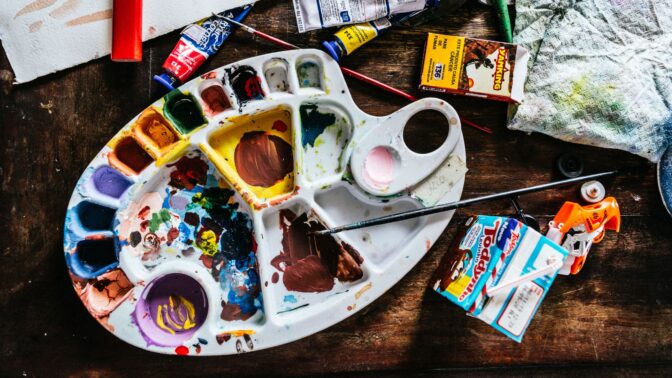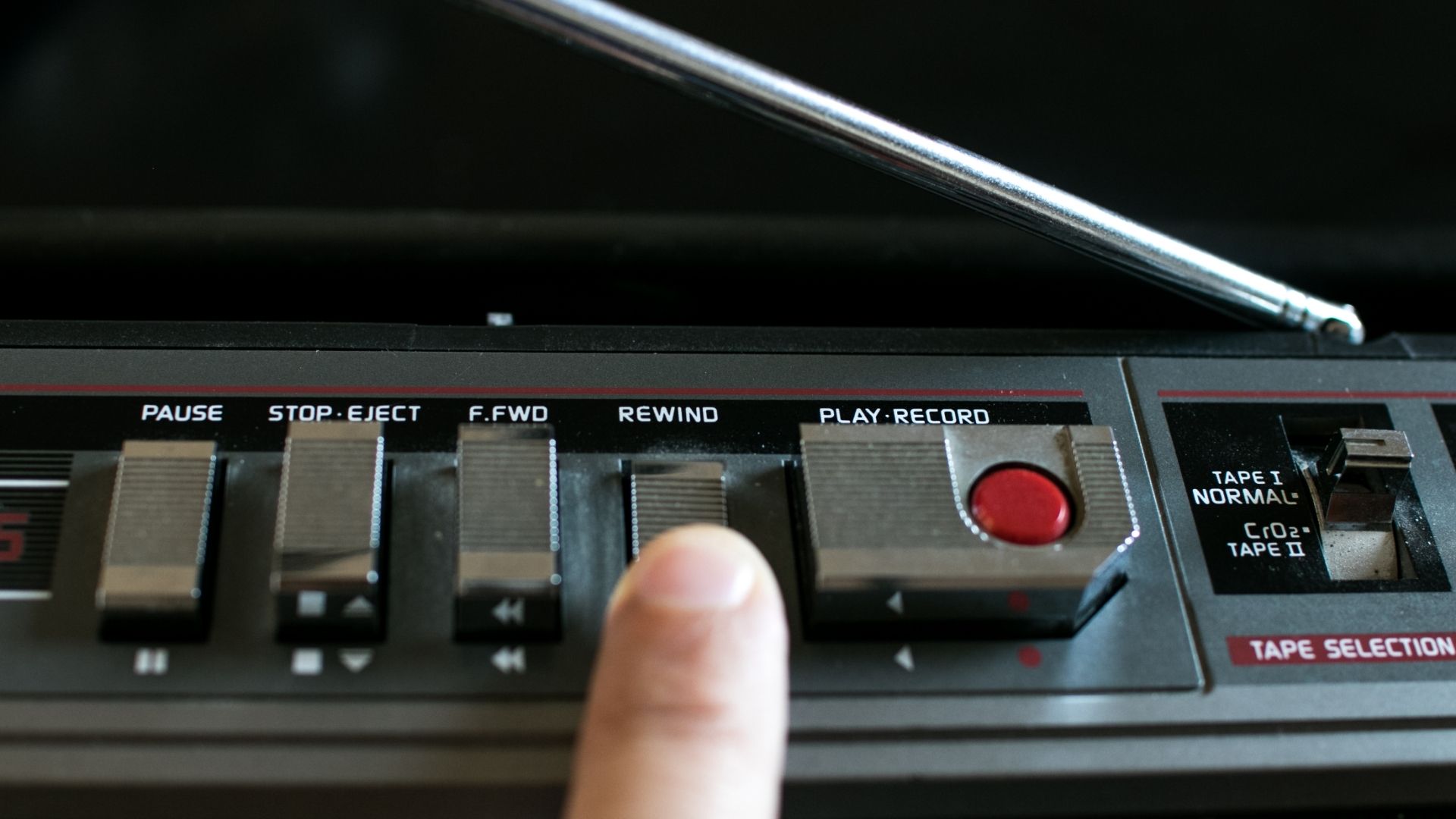What Makes a Great IB Visual Arts Process Portfolio that Stands Out

Here, we explain everything you need to know about the IB Art Process Portfolio, from its purpose and structure to its criteria and format. Plus, how to do your best to create a Process Portfolio that IB Visual Arts examiners will love.
As an IB Visual Arts student, you already know that one of the most important tasks you have to complete is the Process Portfolio. Still, you might be wondering what exactly it is, and how you can make it stand out from the rest.
By the end of this post, you will have a clear idea of how to create an IB Visual Arts Process Portfolio. One that showcases your artistic skills, creativity, and personality.
What is the IB Art Process Portfolio?
The Process Portfolio is not just a collection of your artwork. In addition, it is a story of your artistic journey and a reflection of your personal and cultural influences. Along with that, the Process Portfolio is an opportunity to demonstrate your technical abilities, your way of thinking as an artist, as well as your willingness to experiment, grow, and learn from your experiences.
In summary, when creating Process Portfolio, you need to show how you:
– develop your ideas;
– explore different media and techniques,
– research and analyze artworks and artists,
– communicate your concepts and intentions,
– review and refine your work.
Firstly, the main source for your IB Art Process Portfolio is your Visual Art Journal. You begin to work on it from the first year of the Visual Arts course to develop your artistic skills and learn how to convey your vision. Secondly, starting from the third trimester of the course, you should use the body of work captured in your Journal to compose the screens for your Process Portfolio.
In addition to selected pages of the Visual Art Journal, you can utilise sketches and loose drawings, photographs, unresolved studio work, results of your experiments with various media, as well as other process documentation to compose your Process Portfolio.
Differences in IB Art Process Portfolio for SL and HL
Depending on whether you are taking the Standard Level (SL) or the Higher Level (HL) course, there are some differences in the requirements for the Process Portfolio. Mainly, they concern the number of pages and art-making forms you need to include.
As an SL student, you submit 9-18 pages, while your peers at HL provide13-25 pages. These pages must show your work in two or three different art-making forms for SL and HL respectively. The art-making forms must be taken from at least two groups listed below:
- 2-D: painting, drawing, printmaking, or graphics;
- 3-D: sculpture, designed objects (fashion, architecture, vessels), textiles, or site-specific objects (land art, installation, or mural);
- Lens-based, electronic, and screen-based forms (such as video, animation, and performance).
You can choose any combination of forms that suit your interests and strengths as long as they reflect a range of art-making skills and techniques.
Examination Criteria for IB Visual Arts Process Portfolio
The Process Portfolio takes into account five key criteria, each focusing on different aspects of your artistic practice and contributing to your final assessment.
Criterion A: Skills: Techniques, and Processes. In the first place, this criterion examines how effectively you demonstrate your technical skills/abilities across media and materials. It rewards your capacity to experiment, explore, manipulate, and refine different artistic tools. Criterion A carries a maximum of 12 marks.
Criterion B: Critical Investigation. It evaluates your research and analysis of artworks, artists, artistic genres, movements, etc., and how you integrate this knowledge into your own work. It is important that you demonstrate your critical analysis by comparing and contrasting these sources with your art experimentations. Criterion B contributes up to 4 marks.
Criterion C: Communication of Ideas and Intentions. This criterion assesses your ability to effectively communicate the concepts, meaning, and context behind your artwork. It examines the development of your ideas from initial sketches to final outcomes, emphasizing how you express your unique perspective, voice, and artistic intention. Meeting the requirements of this criterion adds 4 marks to your final result.
Criterion D: Reviewing, Refining, and Reflecting. It focuses on your ability to evaluate your own work in progress, as well as make adjustments and enhancements based on feedback and self-reflection. You need to show that you are capable of reviewing your work at different stages, identifying your strengths and weaknesses, and taking action for improvement. Criterion D brings up to 4 marks.
Criterion E: Presentation and Subject-Specific Language. This criterion requires you to present your work in a clear, coherent, and engaging manner. It considers the organization of your portfolio and a logical sequence from initial ideas to final results. Furthermore, it values your ability to use appropriate visual elements such as layout, colour, and font, as well as written elements to enhance the presentation of your work. The maximum for Criterion E is 4 marks.
Overall, a well-researched and well-organised IB Art Process Portfolio that authentically reflects the development of your unique artistic voice will bring you a maximum of 34 marks, which weigh 40% of your total examination score.
Format of IB Art Process Portfolio
Process Portfolio is a digital submission that consists of a series of screens (photographs, scanned pages, or digital files) showing your artwork in different stages of development.
As such, each screen can contain text, sketches, photographs, images, and drawings. IB Visual Arts guide doesn’t specify the number of these items or their placement, so you can use any format that suits your creative vision.
Moreover, each screen should have a title that indicates the art-making form, the media used, the date, and a brief description of the content. You can also include annotations that explain your intentions, influences, challenges, and solutions. And the screens should be organized in a logical sequence that shows your artistic journey from the conception of an idea to its implementation.
Apart from that, you need to follow certain formal requirements:
– File format: PDF;
– File size: up to 500 MB;
– Image resolution:150 dpi;
– Orientation: preferably landscape;
– Page size: A3 or A4;
– Page number: in the bottom right corner.
– Legible font size (handwritten text is also allowed).
To put together your Process Portfolio, you can use any software or application as long as it meets the requirements outlined above. Your choices are Adobe Photoshop, Adobe Illustrator, Adobe InDesign, Microsoft PowerPoint, Google Slides, Prezi, ad others.
Book free trial with our certified IB Art teachers today
100 % of tutors are certified teachers and examiners
Do’s and Don’ts of Creating a Process Portfolio
Here are some do’s and don’ts to consider when creating your IB Art Process Portfolio to gain the sought-after 34 marks.
Do’s:
- Thoroughly document your artistic process. Capture clear and detailed photographs or scans of your artworks at various stages, including sketches, experiments, and developmental work. This documentation should showcase your growth, exploration, and decision-making.
- Include annotations that explain the context, techniques, materials, media, and ideas behind your creative choices.
- Make comments on your feelings, the progress of your artwork, set goals, challenges, and failures you encountered along the way. Explain how you managed to resolve technical problems and what lessons they helped you to learn.
- Showcase a range of materials and techniques to demonstrate your versatility and experimentation. This will prove your willingness to take risks and try new approaches.
- Provide evidence of research and inspiration, such as references to artists, art movements, or cultural influences, that informed your work. Show how you engaged with the wider art world and incorporated external influences into your artistic practice.
- Try to link your artwork to other IB subjects. For instance, you can draw literary characters that you have become familiar with in Language A literature course, or present biological processes or phenomena as pieces of work.
- Include samples, source imagery, colour swaps, etc. as part of your creative process.
- Arrange your Process Portfolio in a logical and visually appealing manner. Use dividers or sections to clearly separate different aspects of your portfolio. Make sure that presentation enhances the overall coherence and readability of your work.
- Make a statement – your Process Portfolio isn’t only about art, it is also about your beliefs, values, and attitudes. You can use this experience to make a political, social, cultural, or environmental statement.
- At the end, add an extra slide specifying all sources you used. It is excluded from the minimal required number of screens.
Don’ts:
- Don’t include work submitted as part of the final exhibition.
- Don’t forget to check spelling, especially the names of artists, specific art pieces, or terminology.
- Don’t put too many items on Process Portfolio pages. Overcrowded screens can become illegible, making it impossible for examiners to understand your intentions.
- Don’t leave a single page without a comment. There must be some text explaining the development of your artworks even if it is as simple as the date of revision.
Need Help with Your IB Art Process Portfolio?
Creating a Process Portfolio for IB Visual Arts is a journey of self-discovery and artistic growth. It allows you to delve deep into your creative process, experiment with various techniques, and reflect upon your artistic choices.
While it can be a challenging endeavour, remember that you don’t have to navigate it alone. TutorsPlus, a trusted educational service with more than 15 years of experience, is here to make your IB Visual Arts journey as exciting as it gets.
Our dedicated IB Visual Arts tutors have the expertise and knowledge to guide you through the intricacies of the IB Art Process Portfolio, providing valuable insights, feedback, and advice. Whether you need assistance with documentation, organization, or refining your artistic vision, our tutors are ready to help you excel.
Contact TutorsPlus today at or call 022 731 8148, and let us be your partner in achieving your artistic aspirations.















